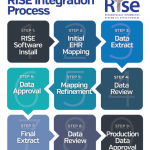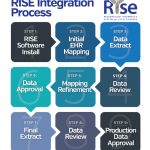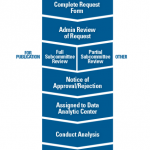On Feb. 16, ACR leaders, insurers, pharmaceutical representatives, patients, patient advocacy representatives and more met in Scottsdale, Ariz. They came together for the first annual RISE Summit, aimed at setting strategic priorities and goals for the Rheumatology Informatics System for Effectiveness (RISE) Registry, the qualified clinical data registry developed by the ACR.
The Rise of RISE
RISE began in June 2014, and it is free for ACR/ARHP members. Today, 719 providers participate, representing more than 1 million patients and roughly 20% of practicing rheumatologists. It has amassed data on approximately 6 million patient encounters.
“It represents the most complete information available on patients with rheumatic disease. Our vision is to put that [information] to good use to improve the care that patients receive, to reduce the costs of care and to improve the lives of patients and their providers while being stewards of the healthcare system,” says Salahuddin Kazi, MD, chair of the ACR’s Registries and Health Information Technology Committee. “Science tells us what we can do; guidelines tell us what we should do; registries tell us what we’re actually doing.”
Further Data Use
Originally designed to help providers collect quality measures and report under the Physician Quality Reporting System, and today equipped for reporting under the Merit-Based Incentive Payment System (MIPS) of the Medicare Access and Chip Reauthorization Act of 2015 (MACRA), ACR leaders, such as Dr. Kazi, want to see the trove of data within RISE be put to further use.
“We are eager for rheumatologists to use RISE data to answer pressing clinical questions in our field,” says Jinoos Yazdany, MD, MPH, chair of the ACR’s Research and Publications Subcommittee. “RISE data can help us better understand not only the natural history, treatment and outcomes of common rheumatic diseases, but also less common diseases.”
For example, Dr. Kazi says that more than 1,000 patients with Takayasu’s arteritis, a rare condition most rheumatologists see just once or twice a year, are now in the RISE database. “Suddenly, [RISE] is a source [for] studying orphan diseases in large numbers,” Dr. Kazi says.
Summit Discussion & Ideal Usage
At the summit, stakeholders engaged in discussion, reviewed RISE and the data currently available, and then broke into small groups to discuss potential uses for RISE. These responses were compiled and will be used to set priorities for the registry. “This was a 10,000-foot view, asking stakeholders to answer: ‘In an ideal world, what would we do with RISE?’” says Tracy Johansson, senior specialist, Registry Analytics for the ACR. For example, RISE could be used to assess the social determinants of health across the country, to track drug safety or to better understand the costs of care.



